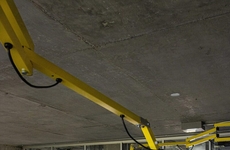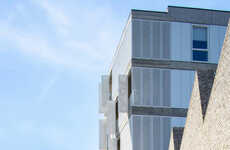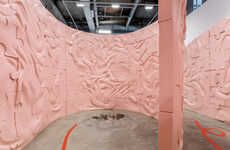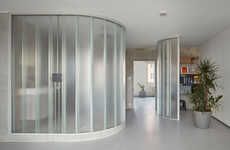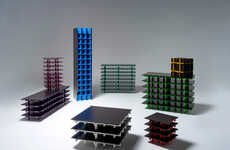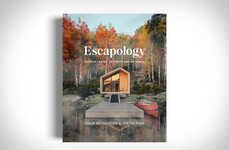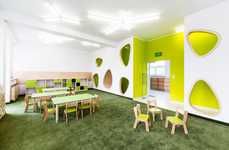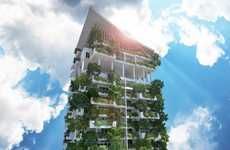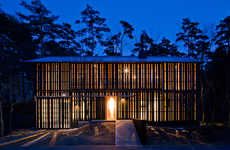
These Neil Taylor are about Self-Actualization
Josh Triantafilou — April 6, 2012 — Art & Design
References: neiltaylorrbonmade & behance.net
On his website, Neil Taylor describes himself as a socially conscious architectural and graphic designer. The concepts featured here, collectively titled, 'Hidden Agendas: freedom of speech forum,' are designed with society and individuals in mind.
Taylor envisions structures that provide spaces for private thought and creation. These structure are to age visibly and fit harmoniously into their cities. Taylor describes declares that some rooms are to be, "dark, concrete caskets that will reveal nothing." In a streak of irony, there seems to be a decidedly Orwellian aspect to these designs. Indeed, almost all the concept art is rendered in dark grays and blacks.
The designs are meant to underline the view that statist and corporate institutions are anti-human. The Hidden Agendas structures are proposed as a way of combating this supposed anti-human society.
Taylor envisions structures that provide spaces for private thought and creation. These structure are to age visibly and fit harmoniously into their cities. Taylor describes declares that some rooms are to be, "dark, concrete caskets that will reveal nothing." In a streak of irony, there seems to be a decidedly Orwellian aspect to these designs. Indeed, almost all the concept art is rendered in dark grays and blacks.
The designs are meant to underline the view that statist and corporate institutions are anti-human. The Hidden Agendas structures are proposed as a way of combating this supposed anti-human society.
Trend Themes
1. Privacy-oriented Architecture - Opportunity for architects to design structures that prioritize private thought and creation, providing individuals with spaces that value their privacy.
2. Urban Integration - Potential for architects to create buildings that age visibly and blend harmoniously into their urban surroundings, enhancing the aesthetic appeal of cities.
3. Countering Anti-humanism - Opportunity to challenge the notion of anti-humanism by designing structures that oppose statist and corporate institutions, promoting a more human-centric society.
Industry Implications
1. Architecture - Architectural firms can explore innovative designs that prioritize privacy and urban integration, responding to the demand for more human-centric and visually appealing structures.
2. Graphic Design - Graphic designers can contribute to the visual representation of privacy-oriented architectural concepts, integrating their skills to create compelling renderings and portray the message effectively.
3. Urban Development - Urban development companies can embrace the opportunity to transform cities by incorporating privacy-oriented structures that promote a more human-centric environment and combat anti-humanism.
2.8
Score
Popularity
Activity
Freshness


